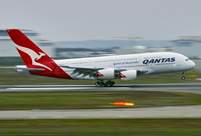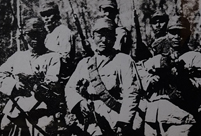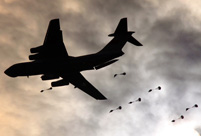 Chinese artists from Flight MH370 and their art
Chinese artists from Flight MH370 and their art
 Top 30 entrepreneurs under 30 in China
Top 30 entrepreneurs under 30 in China
 800-year-old ancient village in Shanxi
800-year-old ancient village in Shanxi
 World's top 10 most prestigious institutions
World's top 10 most prestigious institutions
 Chinese airborne troops conduct low altitude flight training
Chinese airborne troops conduct low altitude flight training
 Beautiful fisherwomen in SE China
Beautiful fisherwomen in SE China
 1,500-year-old coffin excavated from grassland in N China
1,500-year-old coffin excavated from grassland in N China
 See what Google glass captures at 'two sessions'
See what Google glass captures at 'two sessions'
 In pictures: beautiful women in different ages
In pictures: beautiful women in different ages
BEIJING, March 17 (Xinhua) -- The whereabouts of a Malaysian Airlines plane with 239 people on board bound for Beijing remain unknown as the search for it enters its second week.
The Boeing 777-200 flying as MH 370 disappeared from civilian radar screens about one hour after it took off from Kuala Lumpar at 00:41 local time on March 8.
Malaysian authorities determined the movements of the plane were due to a deliberate act, but have not figured out the motive.
The following are some of the world's major airplane crashes surrounded by mystery that have occurred in recent decades.
KOREAN AIR LINES FLIGHT 007
On Sept. 1, 1983, a Korean Air Lines (KAL) Boeing 747-230B was shot down by a Soviet Su-15 interceptor west of Sakhalin Island in the Sea of Japan. All 269 passengers and crew aboard, including Lawrence McDonald, a U.S. congressman, were killed.
The downing of KAL 007 was considered one of the deadliest and most important events of the Cold War.
Initially, Moscow denied the incident had taken place. Later, Soviet leaders admitted what had happened but said the plane was on a spy mission, having deviated from its assigned route from New York to Seoul via Alaska.
The plane was traveling at a heading of 245 degrees, flying like an arrow toward the eastern portions of the Soviet Union.
Important evidence, notably the flight data recorders, were not released until after the collapse of the Soviet Union in 1989.
An investigation conducted by the International Civil Aviation Organization in 1993 showed the pilots' inappropriate interaction with the autopilot controls probably caused the plane to go off its course.
But flight 007 has been the subject of ongoing controversy and has spawned a number of conspiracy theories. Many of these are based on the suppression of evidence, unexplained details such as the role of a USAF RC-135 surveillance aircraft, or are merely Cold War disinformation and propaganda.
Then U.S. President Ronald Reagan announced on Sept. 16, 1983, that GPS would be made available for civilian use, free of charge, in order to avert similar navigational errors in future.
JAPAN AIRLINES FLIGHT 123
On Aug. 12, 1985, a Boeing 747 flying from Tokyo Haneda Airport to Osaka Itami Airport crashed into Mount Takamagahara in Ueno, Gunma Prefecture, 100 km away from Tokyo, more than 40 minutes after take-off at 6:12 p.m. local time.
A total of 520 people died and four survived. It is the deadliest single-aircraft accident in history.
The plane went down because a piece of the aircraft, which had been poorly repaired after an incident seven years earlier, detached during the flight, ripping the vertical stabilizer and severing all four hydraulic systems.
It crashed after violently spiraling through the sky for 32 minutes -- enough time for passengers to understand they were on their last flight, and to scribble their final messages.
The U.S. Air Force controllers at Yokota Air Base situated near the plane's flight path had monitored the aircraft's calls for help. A C-130 helicopter was the first to spot the crash site 20 minutes after impact, while it was still daylight. The C-130 crew radioed Yokota Air Base, which then dispatched a Huey helicopter with night vision capability. Rescue teams were prepared to be lowered to the site.
However, the U.S. offers of help to guide Japanese forces immediately to the crash site and of rescue assistance were rejected by Japanese officials, who ordered the U.S. crew to keep away from the crash site, stating the Japan Self-Defense Forces would handle the entire rescue alone.
The decision of Japanese authorities aroused criticism as poor visibility and the difficult mountainous terrain delayed the operation, which may have resulted in crash survivors dying from shock or exposure overnight in the mountains.
IRAN AIR FLIGHT 655
A Iran Air civilian passenger flight from Tehran to Dubai was shot down by the U.S. Navy guided missile cruiser USS Vincennes on July 3, 1988, killing all 290 on board, including 66 children.
The attack took place in Iranian airspace, over Iran's territorial waters in the Persian Gulf, and on the flight's usual flight path. It happened shortly before the Iran-Iraq War ended in August 1988.
Tehran said Vincennes negligently shot down the plane, which was flying in a mode different from Iranian military planes, identifying it as a civilian aircraft.
The U.S. government claimed the crew incorrectly identified the Airbus A300 as an attacking F-14 Tomcat fighter.
SILKAIR FLIGHT 185
SilkAir Flight 185 was a scheduled SilkAir passenger flight from Jakarta, Indonesia to Singapore. The Boeing 737-36N crashed into the Musi River in southern Sumatra, Indonesia, on Dec. 19, 1997, killing all 97 passengers and seven crew members on board.
The Indonesian National Transportation Safety Committee reported it could not determine a cause of the crash due to inconclusive evidence.
The American National Transportation Safety Board (NTSB) also participated in the investigation. It found the cockpit voice recorder and flight data recorder stopped recording minutes before the abrupt descent, but not at the same time. The radio continued to work after the failure of the recorders, which indicates power failure was not the cause.
The U.S. body concluded the evidence was consistent with a deliberate manipulation of the flight controls, most likely by the captain.
EGYPTAIR FLIGHT 990
Mystery surrounds the crash of EgyptAir Flight 990, which left John F. Kennedy International Airport in New York on Oct. 31, 1999 bound for Cairo.
The Boeing 767 crashed into the Atlantic south of Massachusetts killing all 217 passengers and crew.
The Egyptian report suggested different control failure scenarios as possible causes of the crash, focusing on a possible failure of one of the right elevator's power control units.
While the report of the NTSB, the American investigatory body, did not determine a specific reason for the co-pilot's actions, the primary theory is that he committed suicide.
AIR FRANCE FLIGHT 447
On June 1, 2009, Air France Flight 447, an Airbus A330, went down over the Atlantic Ocean after leaving Rio de Janeiro for Paris, killing all 228 people on board.
The aircraft's black boxes were not recovered from the ocean floor until May 2011, nearly two years later.
A final report released by the French government in July 2012 stated that ice crystals obstructed pitot tubes in the aircraft, causing the autopilot to disconnect.
The crew reacted incorrectly and ultimately led the aircraft to an aerodynamic stall from which they did not recover, the report said.
 Female journalists at 'two sessions'
Female journalists at 'two sessions' Interpreters serving 'two sessions'
Interpreters serving 'two sessions' Female SWAT team in Chongqing
Female SWAT team in Chongqing Top 10 safest airlines in the world
Top 10 safest airlines in the world Old photos of Anti-Japanese War
Old photos of Anti-Japanese War Mysterious 'Dolan Tribe' in Xinjiang
Mysterious 'Dolan Tribe' in Xinjiang A bite of Luoping County
A bite of Luoping County This is Shanghai
This is Shanghai Chinese airborne troops complete parachute training in various training bases
Chinese airborne troops complete parachute training in various training bases Ballerinas anywhere but onstage
Ballerinas anywhere but onstage Most unusual taxis around the world
Most unusual taxis around the world Micro-expression at 'two sessions'
Micro-expression at 'two sessions' Bridge Worship Festival in Taijiang, SW China
Bridge Worship Festival in Taijiang, SW China Hollywood documentary brings Diaoyu Islands truth to new audience
Hollywood documentary brings Diaoyu Islands truth to new audience Miss HK and actresses shine at flower show
Miss HK and actresses shine at flower showDay|Week|Month